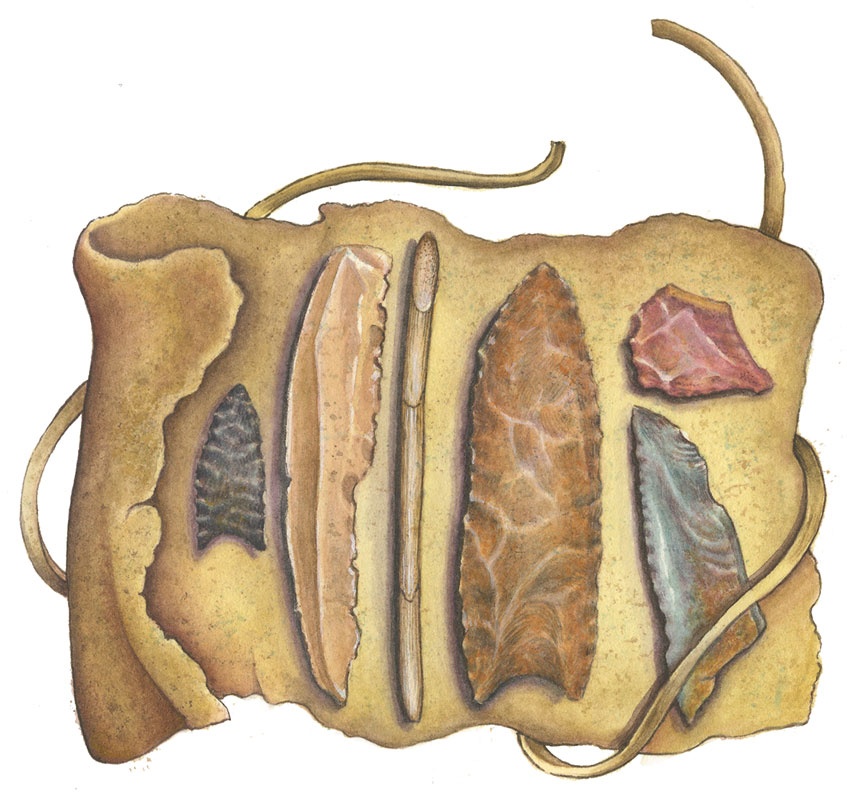Anthropologist Michael R. Waters did not believe his 2006 dig along Buttermilk Creek would fundamentally alter the understanding of the first humans in Texas.
Excavations had unearthed tools that detail almost continuous habitation of the site near Salado for thousands of years. Waters, the director of the Center for the Study of the First Americans at Texas A&M University, wasn’t surprised to find these artifacts. They proved the evidence of the Clovis people, who inhabited the areas 12,800 to 13,100 years ago. Scientists had long held that Clovis people were the earliest humans in the Americas.
The real surprise for Waters and his team came when further excavation un-earthed more primitive tools beneath the Clovis level. Roughly 15,000 artifacts appeared: blades, flakes and end scrapers, left by an unknown people who lived along Buttermilk Creek 2,500 years before Clovis.
Who were these pre-Clovis Texans who left behind signs of double-sided toolmaking that would be refined about 2,000 years later by Clovis artisans?
“They were probably hunter-gatherers, passing through the area from time to time over thousands of years,” Waters says. “The artifacts make up a mobile toolkit, easily transported to the next campsite.” Waters knew that his discovery would be controversial and supporting materials essential, but the absence of organic matter at this deep level made traditional radiocarbon dating impossible.
Instead, he called in experts Steven L. Forman, Lee Nordt and Steven Driese of Baylor University to use optically stimulated luminescence dating, a method that measures the time since crystals in sediment were last exposed to sunlight. The samples from the Buttermilk Creek site consistently yielded the same ages: 13,200–15,500 years.
“We were all surprised at the antiquity of the site,” Forman says, “but duplication of observations and ages supported a new view on paleo populations of the Americas.”
“The sediment layers were remarkably intact,” says Nordt. “The ancient floodplain sediments were clayey enough to mitigate against bioturbation [disruption by animals or roots] and mixing of artifacts from different time periods, but not so clayey as to cause churning and mixing.”
In the mid-20th century, most archaeologists jumped aboard the Clovis-first bandwagon. The consensus is that the Clovis people, named for the town in New Mexico near where their spear points were first discovered, arrived in the New World from Asia over a land bridge and spread through North and South America. The discovery of pre-Clovis populations shoots holes in this long-cherished view.
Other traces of pre-Clovis peoples have cropped up in Wisconsin, Pennsylvania and Oregon, and as far south as Monte Verde, Chile. Alternative migration theories suggest that early settlers may have come down both coasts, either on foot or hugging the shoreline in small boats. DNA samples confirm that early Texans are of Asian ancestry, but confirming a precise date for their arrival is difficult.
Because no Clovis artifacts have ever been discovered in Asia, the fluted spear point technology that marks Clovis occupations must have developed after the new settlers arrived in this hemisphere. However, Waters points out that stone tools may represent only 5 percent of a culture’s material relics. Others, such as textiles, animal skins, wood, bone and antler tools disintegrate over time. “We have to be careful,” Waters says, “about how we interpret the small amounts of evidence.”
Archaeology is subject to controversial discoveries and interpretations. Although most archaeologists accept Waters’ findings, a few hesitate, even when faced with compelling evidence.
“We continue to work as a team,” Forman says, “to provide geologic context critical for dating. New discoveries are almost certain at Buttermilk Creek in the future.”
——————–
Martha Deeringer, a member of Heart of Texas EC, lives near McGregor.


